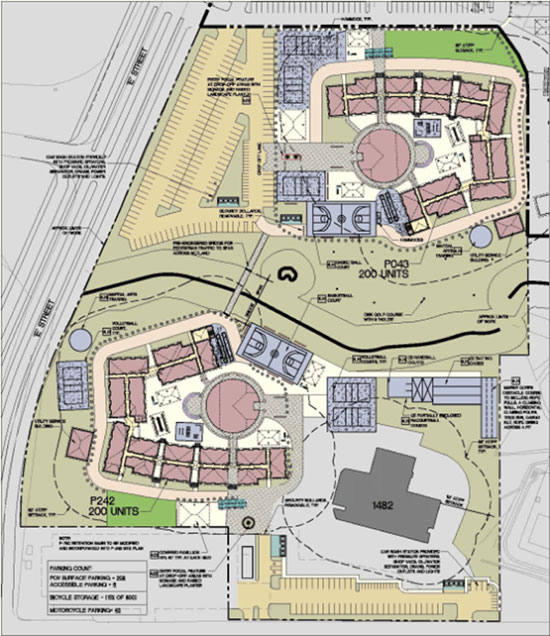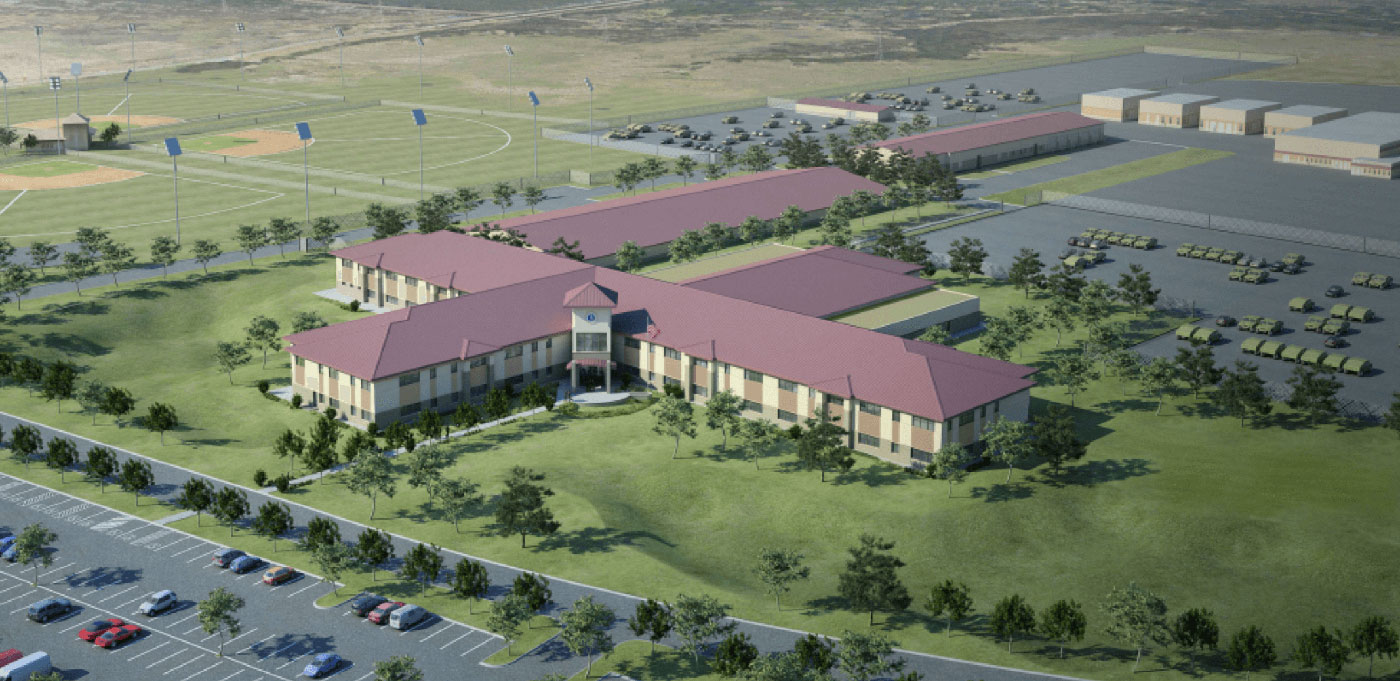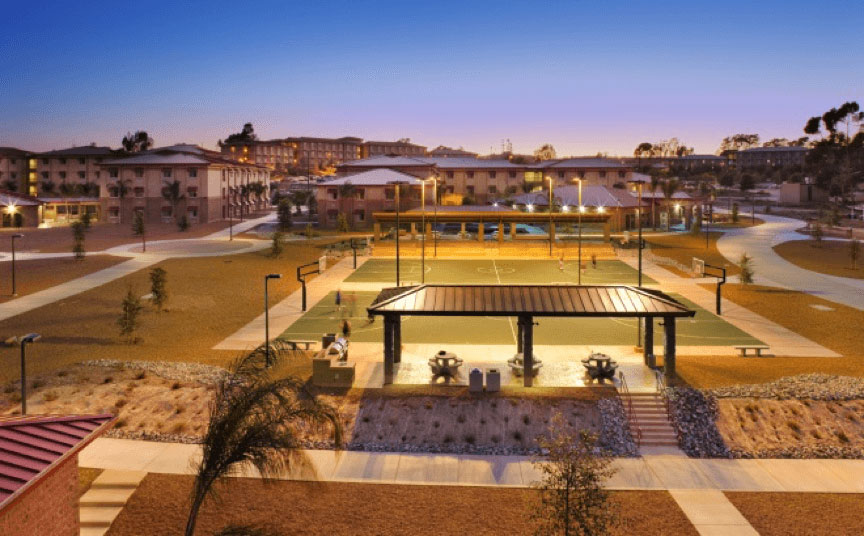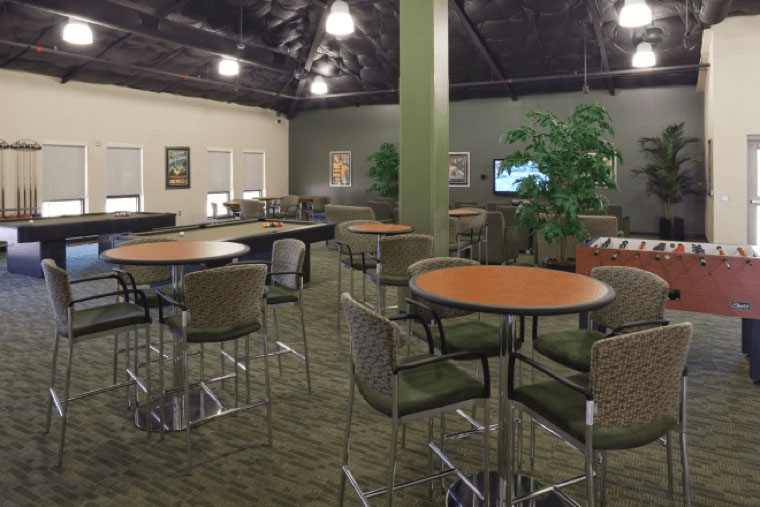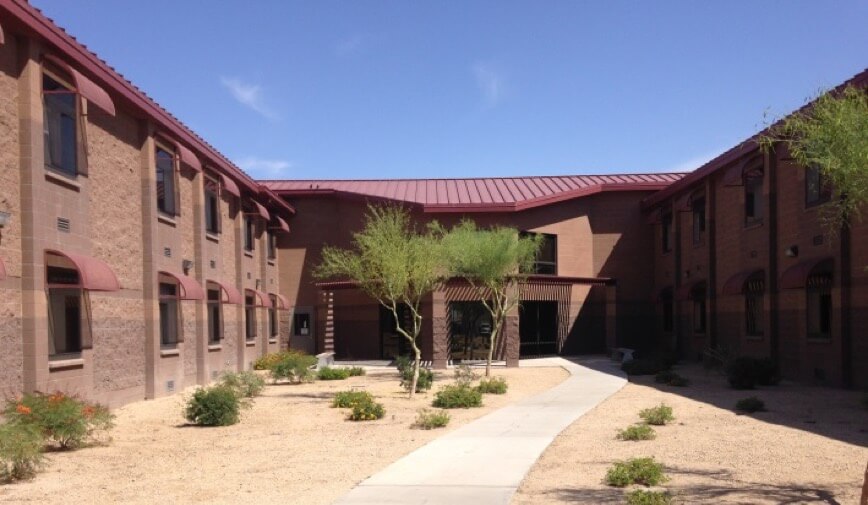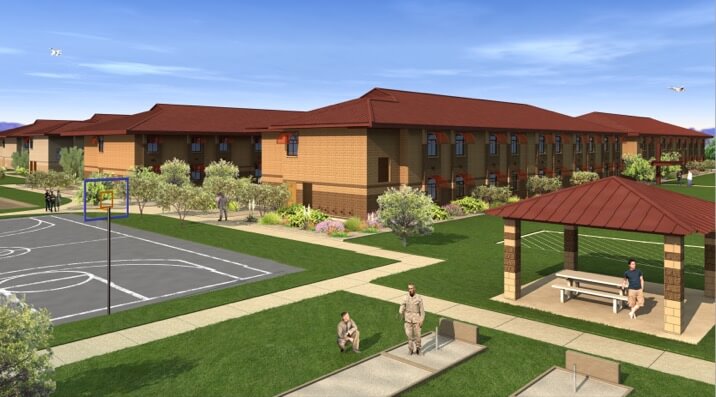BEQ Package 5
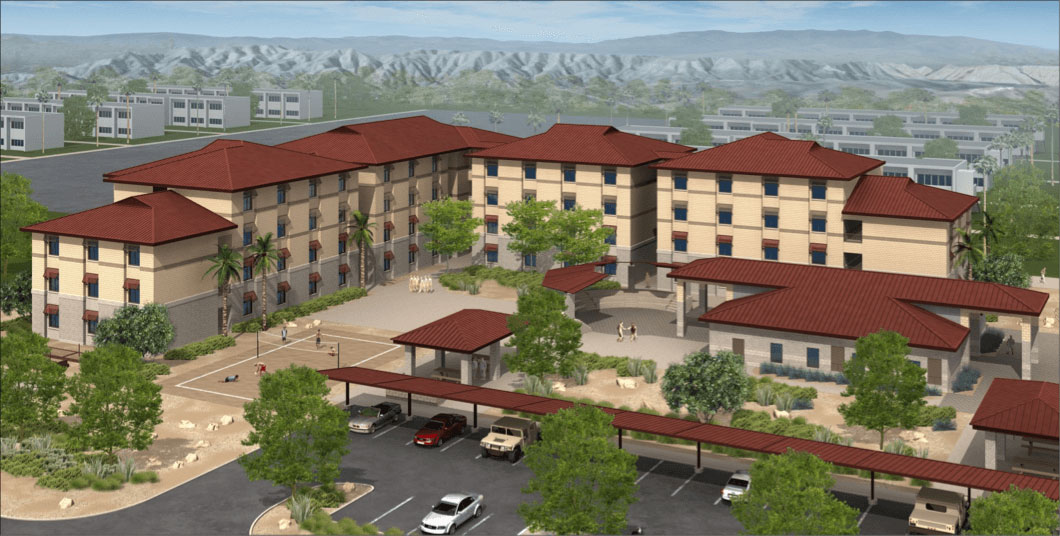
Contract Amount: $133,146,955
LEED Certification: Platinum
Contract Duration: September 2009 – June 2011
Gross SF: 455,691 (total)
Consisting of the design and construction of four separate Bachelor Enlisted Quarters (BEQ, equivalent to dormitories in the private sector), this single contract developed three separate sites to accommodate the four buildings. Each site presenting their own series of restrictions and challenges the buildings themselves shared similarities in order to maximize the efficiency of design as well as construction and cost. One design element used consistently throughout all of the sites in efforts to make them recognizable to one another was the introduction of colored and stamped concrete entries and circulation paths surrounding the building as well as leading up to the central community building. Surrounded by multiple major shared program components and recreational amenities such as open courtyards, sports courts and picnic areas a strong focus was placed on creating a comfortable atmosphere for residents to enjoy. Additionally, all of buildings shared a segmented and angled arrangement which promoted the social interaction and homelike environment desired by the owner. Emphasis was placed on masking the size of the buildings.

All of the structures were arranged in small “clusters” designed to be small in scale breaking up the building mass, reducing the overall size, and simultaneously broadcasting a variety of roof heights and forms. Each floor has expanded open central breezeways with plentiful natural light and offsets to eliminate long or dark straight corridors. Intermediate cross breezeways separate the building clusters, maximize natural daylighting, and capitalize on the prevailing wind for increased cross ventilation.
All of the facilities were individually registered with the USGBC and each received a Platinum rating. In line with the strict requirements for such a prestigious achievement durable and sustainable materials were specified throughout the project including recycled carpet tiles, stained concrete, Low VOC paints, recycled custom glass mosaic tile and upgraded linoleum flooring. Additionally, all of the sites maximized their water efficiency by utilizing xeriscape principles including low/no maintenance planting, low water use automatic drip sprinklers, and a creative use of varied crushed rock mulch and trees to accent key features.
